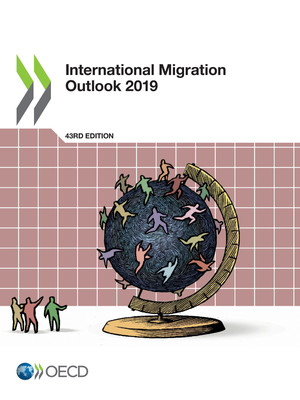copy the linklink copied!New Zealand
1.1 million, 52% women
24% of the population
Evolution since 2007: +32%
Main countries of birth:
United Kingdom (23%), China (8%), India (6%)
In 2017, New Zealand received 47 000 new immigrants on a long-term or permanent basis (including changes of status and free mobility), -15.3% compared to 2016. This figure comprises 13.8% immigrants benefitting from free mobility, 25.2% labour migrants, 52.2% family members (including accompanying family) and 8.8% humanitarian migrants.
Around 25 000 permits were issued to tertiary-level international students and 131 000 to temporary and seasonal labour migrants and trainees.
China, the United Kingdom and India were the top three nationalities of newcomers in 2017. Among the top 15 countries of origin, South Africa registered the strongest increase (700) and India the largest decrease (-1 000) in flows to New Zealand compared to the previous year.
In 2018, the number of first asylum applicants decreased by 19%, to reach around 500. The top nationality of applicants was Chinese (100). Of the 300 decisions taken in 2018, 32% were positive.
Emigration of New Zealanders to OECD countries decreased by 3% to 29 000. Most of them went either to Australia (42.8%) or the United Kingdom (40.9%).
Changes to the Skilled Migrant Category (SMC) became effective in August 2017. Salary thresholds were introduced to supplement the assessment of ‘skilled employment’. New Zealand median full-time income is the threshold imposed for higher-skilled occupations, while it is set at 1.5 times this level for occupations normally classified as lower-skilled. In addition, greater recognition of work experience and post-graduate qualifications were introduced in the points system.
Changes to employment-based temporary work visas were also introduced in August 2017, including graduated skill bands based on the occupation and salary. A maximum duration of three years was introduced for lower-skilled temporary work visa holders, after which they need to spend 12 months outside New Zealand before they can be granted another visa. Their partners and children are now required to meet work or student visa requirements in their own right since dependant visas are no longer available. These changes were intended to continue enabling employers to hire temporary migrant workers where there are genuine shortages, while ensuring more transparency as regards lower-skilled migrants’ long-term future prospects in New Zealand. A construction-related skills shortage list has been introduced to respond to skill shortages in the industry.
The changes in legislations for post-study work visas came into effect on 26 November 2018 to link work rights to higher qualifications. One- to three-year post-study open work visas are now granted to students according to their level of qualification obtained in New Zealand. In addition, the employer-assisted post-study work visa has been removed at all levels. These changes are intended to improve the skills of those on the study-to-work pathway and reduce exploitation of migrant workers.
Applicants for residence class visas can now apply online and this service is available to those applying for temporary work, visitor and student visas. Family members can also now be included in an application where the policy permits. In total, more than 80% of visa applications are now eligible to be applied for online. As of August 2017, 60% of visa applicants were therefore able to apply online, expanding to 80% of all visa applicants from early 2018. Consequently, visa services have been reorganised and most offices abroad are closing. Offices in New Zealand are now mostly aligned by customer segment i.e. work, student, family reunification.
The refugee quota increased to 1 000 places annually from July 2018 and the government has announced that this will be increased to 1 500 annually from July 2020. The first refugees have arrived under the Community Organisation Sponsorship Scheme that is currently being piloted for 25 people per year.
For further information:
www.mbie.govt.nz/info-services/immigration
Metadata, Legal and Rights
https://doi.org/10.1787/c3e35eec-en
© OECD 2019
The use of this work, whether digital or print, is governed by the Terms and Conditions to be found at http://www.oecd.org/termsandconditions.



